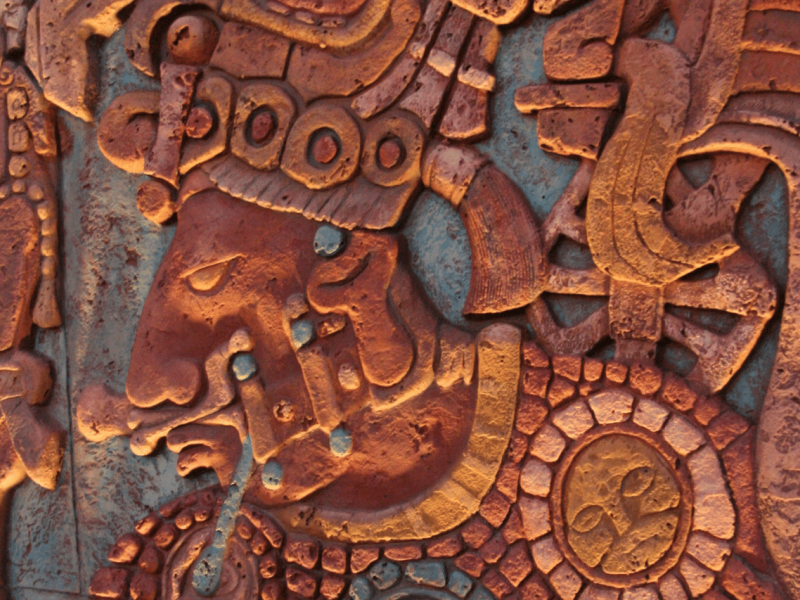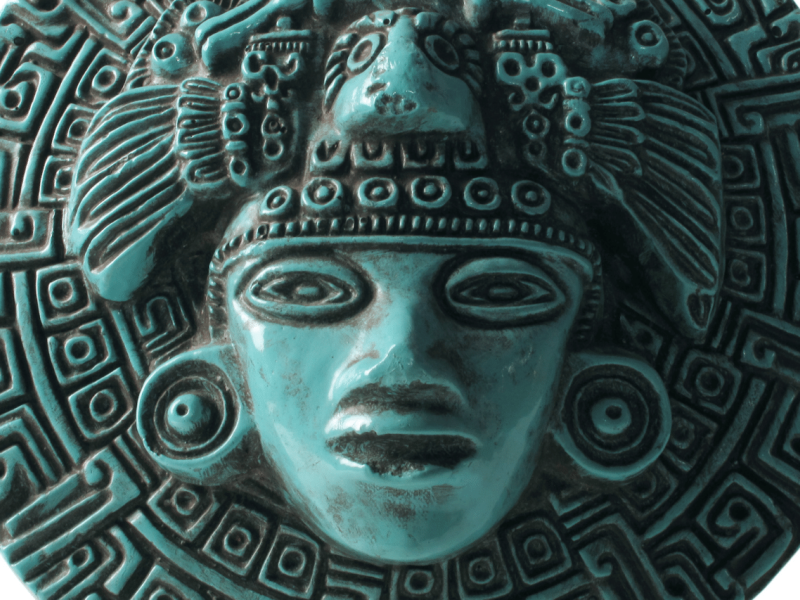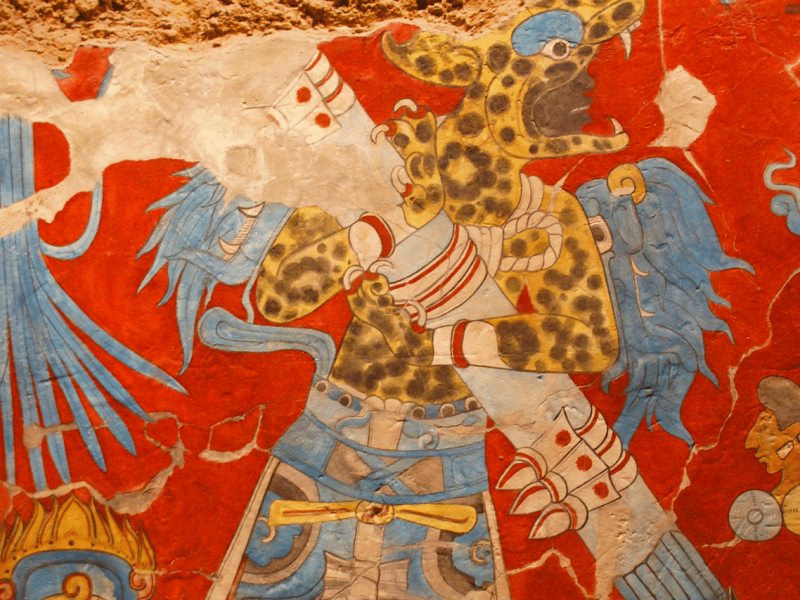Xochiquetzal
Xōchiquetzal: Aztec Fertility Goddess
Xochiquetzal was the Aztec god of fertility. She was also the goddess of pregnancy, love, sexuality, and weaving. She was a lunar deity and was thus linked to the patterns of the moon.
Xochiquetzal’s name in Nahuatl meant something like “Flower Quetzal Feather” or “Precious Feather”. Xochiquetzal’s bio will detail the fertility goddess’ story and how she helped the Aztecs through sex, love, and reproduction.
Who was Xochiquetzal in Aztec Mythology?
Xochiquetzal’s name is a combination of two words. One is xochitl, meaning flower. The other is quetzalli, meaning Quetzal bird or the tail feathers of that bird. Her name is pronounced show-chee-ket-zal. Different from other goddesses, Xochiquetzal was always portrayed as a young woman.
She was the most beautiful of the Aztec gods. The other goddesses were portrayed as older and matronly. After the Spanish conquest of the Aztecs, this took on a sort of virginal connotation. But it wasn’t originally meant that way.
She was one of many goddesses of fertility in the Aztec pantheon, but she was probably the most important. As a young woman, it makes sense that she was one of the Aztec goddesses of love (erotic love) and a goddess of beauty. Flowers are symbolic of love and the female anatomy in many Mesoamerican cultures. So Xochiquetzal was often painted with them or shown wearing them.
Her focus was not just on love and sex for the sake of reproduction but also for pleasure. She could be compared to Aphrodite, the Greek goddess of beauty and love. Not only was she a goddess of beauty and love but also the goddess of pregnancy and weaving. It doesn’t make that much sense to connect them all together.
Weaving & Xochiquetzal
Weaving was traditionally a female skill and activity. Apparently, weavers might have also sometimes been seen as promiscuous women. Because Xochiquetzal in mythology was sometimes seen as promiscuous and a seductress. This could be why she’s linked to weavers.
As weavers create their materials, their product grows. As a baby develops inside of a pregnant woman, her belly grows. And as the moon moves through its monthly cycles, the moon grows. These symbols are all linked in Aztec mythology. They tie together under Xochiquetzal’s domain.
She was also a lunar deity and so was linked with the cycles of the moon. She was the goddess of fertility and the moon. Its patterns match the fertile patterns of a woman as well as her cycles. In different images of her, Xochiquetzal followed the moon, showing its different aspects. She may, in general, represent one phase of the moon most often.
The Goddess of Beauty’s Origin
This goddess was very old and well-known, and yet the story of Xochiquetzal is a little unclear. There doesn’t seem to be many records of what exactly her origins are. Some myths stated that she was Tlazolteotl’s daughter, a goddess of both filth and purification. Her father was Piltzintecuhtli, the god of the rising sun. She might also have come from Tamoanchan. The Aztecs considered this their mythical ancestral place.
However, she was adopted from the Mayan culture, and Tamoanchan is a Mayan word. Xochiquetzal was based on the Mayan Goddess I. She was also the goddess of love, pregnancy, and weaving. Similarly, Goddess I was also a part of the lunar deities.
Xochiquetzal had a twin brother named Xochipilli. He was also a god of love, art, and beauty. But in his case, he was representative of homosexuality and the patron of male prostitutes. An image of them sitting together across from each other is in the Codex Fejérváry-Mayer.
In varying myths and legends, Xochiquetzal had many husbands. The Aztec goddess of fertility was linked with:
Piltzintecuhtli: he might have been her father or her husband.
Tlaloc: the god of rain
Tezcatlipoca: one of the four main creator gods
Centeotl: the god of maize
Xiuhtecuhtli: the god of fire and heat
There isn’t very much information about each of the marriages. But her multiple lovers display her connection to erotic love, sexuality, and the act of sex.
Xochiquetzal’s Mythology
Xochiquetzal was not unlike Eve in the Bible. She was part of the beginning of humankind, used to bring about humans. The four creation gods were attempting to bring humans into the world. They made man and woman, and these two people had a son named Pilcetecli.
But there were no other people in the world, and so there was no one for Pilcetecli to marry. So, the gods created a woman out of Xochiquetzal’s hair to become Pilcetecli’s partner and marry him.
This is similar to the Christian story of the first woman, Eve, being created from one of Adam’s ribs. Because of this story, Xochiquetzal could be seen as the mother of all the women on earth. Therefore, she had strong links to childbirth and the process of creating new life.
Xochiquetzal, the Seductress
Xochiquetzal had a reputation as a seductress. Like Eve, she was the first woman to sin in the world. She seduced her own brother Yappan, even though he had attempted to take a vow of chastity. Because he gave in to the temptation, Yappan was turned into a scorpion. But Xochiquetzal went unpunished. Some legends state that Yappan was her very first lover.
At some point in mythology, she also seduced Topiltzin-Quetzalcoatl. He was the Lord of the Toltecs. Her varying husbands were the result of the other gods fighting for her. Her marriage to Tezcatlipoca is probably the most well-known in the myths. He got jealous of her marriage to Tlaloc, and so he kidnapped her, forcing her to marry him.
Tlaloc returned to fight Tezcatlipoca to get his wife back. He was successful, but he forbade her from ever returning to mankind again. So, she was stuck in Tamoanchan, the ancestral land of the Aztecs. It was said to be a beautiful place but rather lonely. She might also have been the wife of the sun. The sun would move through Mictlan, the underworld, at night. Then it would return to the day to be with Xochiquetzal.
The Foul Smell of the Underworld
One of the Aztec legends claimed that Xochiquetzal was the reason for Mictlan’s bad smell. One day, Quetzalcoatl was washing by some rocks. His semen dripped onto one of the rocks, and Xochiquetzal was there. The gods sent a bat to come and bite Xochiquetzal on the genitals as punishment. From there grew bad-smelling flowers. These were then presented to Mictlantecuhtli, the lord of the underworld.
Festivals, Worship, and Rituals for the Aztec Fertility Goddess
Each year, Xochiquetzal was worshipped alongside Tlaloc in one of his many festivals. Hueypachtli, or Tepeilhuitl, was celebrated to honor the rain god. But the worshippers of Xochiquetzal also joined in on this festival. She was also worshipped in the month of Toxcatl during that festival.
For Hueypachtli, the people celebrated through the offering of sacrifices, especially flowers. There was also drinking as well as sexual acts. A young woman was chosen to represent the goddess. She was dressed as Xochiquetzal and made into an ixiptlatli, or impersonator.
God impersonation and sacrifice were very common at many Aztec festivals in honor of the gods. The priest would decapitate the woman, and then her skin was flayed. It was like ceremonies in honor of Xipe Totec. One of the priests would wear the skin and then perform the act of weaving. Other worshippers would dance around him and confess their sins.
The Aztecs performed a similar ritual during Toxcatl. But before this festival, they chose a young virgin to marry a young warrior. This union lasted for a year until the festival. Then this woman, the impersonator of Xochiquetzal, was sacrificed to the goddess.
Xochiquetzal in Art
Xochiquetzal was portrayed as a beautiful young woman in images and sculptures. Instead of matronly, she was shown as seductive, alluring, and youthful. Because of her connection to the art of weaving, she was often carrying weaving tools. She carried tools along with bouquets of flowers.
She was depicted in rich clothing, jewels, and sandals. This showed her high status amongst the gods. She also had a rather large nose piercing, which was also a status symbol. A small clay Xochiquetzal statue can be found in Museo Amparo, Mexico. This statue portrays her not as fearsome but as beautiful. She often wore a jeweled necklace, feathered headdress, and patterned skirt.
Xochiquetzal was seen as the mother of women and protected women in childbirth and after. But it’s unclear whether she had children of her own. In art, she was often shown holding a child or nursing a child, but we’re not sure who this child was meant to be. Some areas believed the child to be Quetzalcoatl, the sun god.
Many codices portray her in various images, either alone, with her twin brother, or with other gods. The Codex Borgia has one image of Xochiquetzal and Tlaloc sharing the “stage” at a festival. This was most likely Hueypachtli.
Conclusion
Take a look at the hot points of Xochiquetzal and her story:
Xochiquetzal, was the goddess of fertility, sex, beauty, erotic love, pregnancy, and weaving. She was also a lunar deity as fertility, sex, and menstrual cycles are all related to phases of the moon.
She was always portrayed as a young and alluring woman. She wore rich clothing and carrying flowers or weaving tools.
This differs from other goddesses in the Aztec pantheon. Others were mostly always depicted as older, matronly women.
Xochiquetzal had an uncertain heritage. But she might have been the daughter of Piltzintecuhtli and Tlazolteotl. She had a twin brother named Xochipilli who was a god of art, dance, love, and beauty. He was also connected to homosexuality and male prostitutes.
Xochiquetzal had many husbands and lovers and was often seen as a seductress. That could be the reason she was linked to weaving. Weaving women often had a reputation as being promiscuous.
Some myths stated that the second woman on earth was created by the four creation gods using Xochiquetzal’s hair. Because of this origin tale, she was considered the mother of all women on earth.
She was part of the origin story for scorpions, bats, and the bad-smelling air of Mictlan, the underworld.
Xochiquetzal was worshipped at the Hueypachtli festival and the Toxcatl festival.
A young woman was dressed as the goddess and decapitated and flayed. A priest would wear the skin and imitate the process of weaving. Dancers surrounded him.
Many gods and goddesses of the Aztec pantheon were connected with fertility/childbirth. Think Chalchiuhtlicue and Coatlicue, both patrons of newborns and childbirth. But instead of young women, they were shown as older and matronly. All of them already had many of their own children.
But Xochiquetzal was still a ‘mother’ in her own way. There wasn’t much information about any children that she had borne. She was a mother to womankind, having offered her hair as the source of their origin. She was also the mother of all. She encouraged love and sex both for pleasure and for reproduction. She helped the propagation of the species.
She was unique in that her power lay in her youthful beauty and allure. She was seen as a seductress and a woman of many lovers. Yet, unlike our current culture, she wasn’t punished or looked down upon for this fact. Instead, she was worshipped and revered for her powers. So much so that every year, perhaps even twice a year, a young woman was sacrificed in her honor.
Oddly, after the Spanish took over the Aztecs and took some of the Aztec images, Xochiqueztal’s image changed. The Spanish missionaries equated her young woman depiction to that of a virgin. For devout Catholics, virginity was highly prized. It meant she was chaste, clean, and pure.
Eventually, Xochiquetzal’s image was even connected with and likened to the Virgin Mary. Xochiquetzal made her start as the Mayan god of fertility, love, beauty, and sex. However, as time would have it, she became similar to an image of the Virgin Mary. Her image connected to the Virgin Mary can still be seen today in some areas of Mexica.
A pagan Aztec goddess of desire and erotic love made the transition to Christian purity, chastity, and motherhood. What a journey the Aztec goddess of love has made throughout history!













